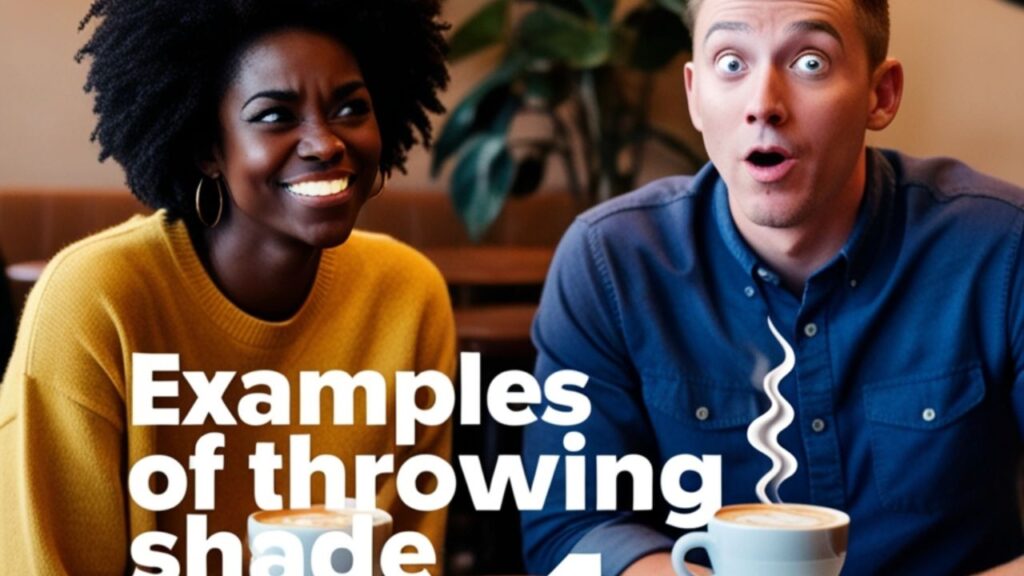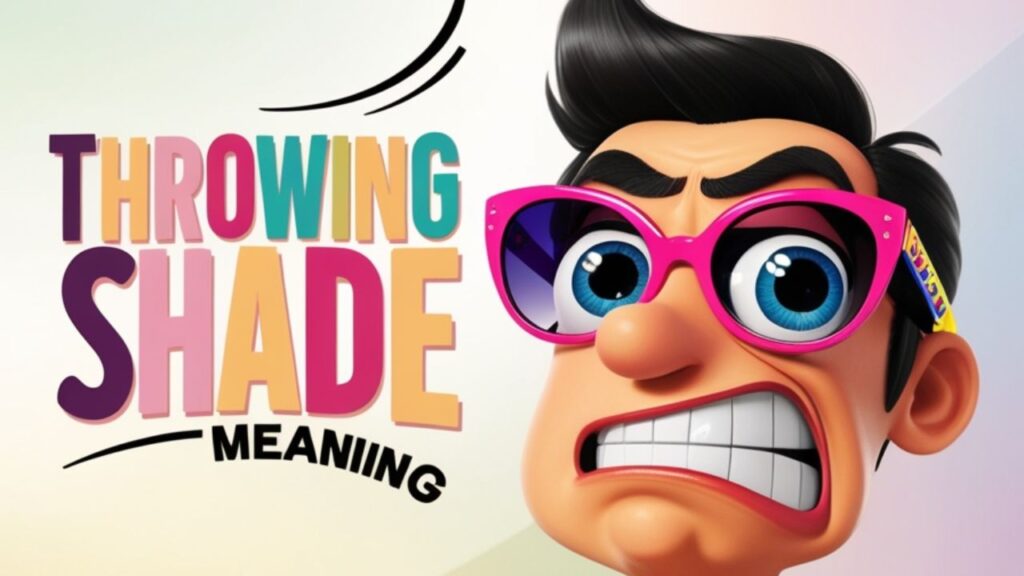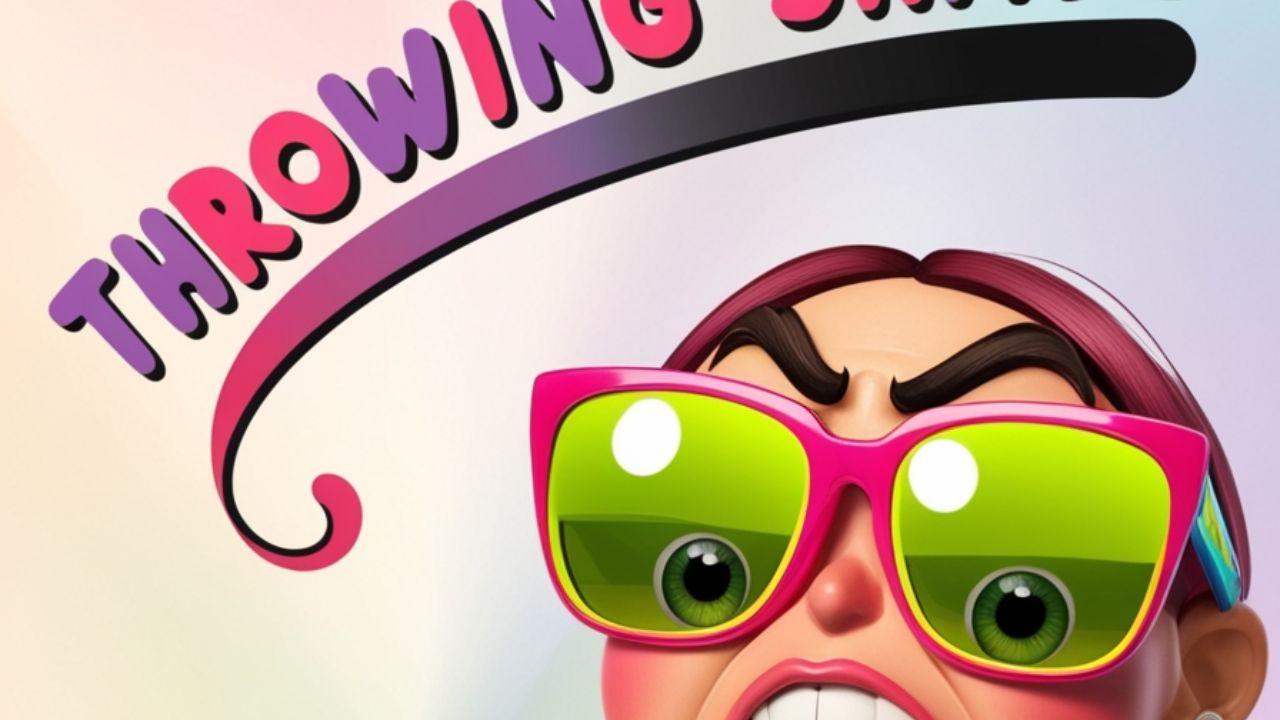Throwing shade is a way to give a clever, indirect insult. People do not say mean things loudly. They use small words, gestures, or looks to show they are unhappy or joking. It is smart and subtle.
In pop culture, shade appears in movies, TV shows, and social media. Celebrities use it to make comments quietly but clearly. Fans notice the clever hints and share them online. This makes shade a fun part of entertainment.
People also use shade in everyday life carefully. A small comment or smile can show humor or criticism without hurting anyone. Learning to read subtle signals helps understand conversations better and enjoy social situations more.
Understanding the Meaning of “Throwing Shade”
Throwing shade shows clever indirect criticism. People use small comments, gestures, or looks instead of saying something harsh. It is quiet, smart, and often funny. This skill helps people express feelings without being loud or rude, keeping conversations smooth.
This style appears in many social situations. Friends, celebrities, and online users give small subtle jabs to show opinions or humor. Learning to notice these hints improves understanding and helps people enjoy clever communication with respect and style.
- Throwing shade means giving a smart and indirect insult without being loud or harsh.
- It uses small comments, looks, or gestures to show hidden meaning.
- Shade focuses on cleverness, style, and timing instead of open rudeness.
- It makes conversations more interesting, witty, and memorable for listeners.
Origins in 1980s Black and Latino Gay Communities
- Throwing shade began in the 1980s inside ballroom culture in New York.
- Black and Latino LGBTQ+ groups used it to show wit and style.
- Shade was part of fashion, dance, and verbal contests in these events.
- Films like Paris Is Burning helped share this cultural expression with the world.
From Subtle Insults to Mainstage Slang
Throwing shade started in the 1980s during ballroom culture in New York. Black and Latino LGBTQ+ communities created it as a smart way to compete in style, dance, and words. Shade helped show talent and cleverness with small gestures or comments.
In these communities, shade became a skill. People learned to give subtle digs without being loud. It was both fun and important for standing out in competitions. This clever style later spread to television, social media, and everyday conversations worldwide.
The Art of Subtlety: How to Recognize When Shade Is Being Thrown
Throwing shade shows itself through subtle cues like small comments, facial expressions, or gestures. People do not speak loudly but give clever hints. Watching body language and tone helps understand the hidden meaning behind their words.
Knowing shade improves social awareness. A pause, smirk, or gentle remark can carry humor or criticism. Recognizing these signs helps people enjoy conversations and respond politely while appreciating clever, quiet communication in daily life.
- Throwing shade often appears in small remarks that sound polite but carry hidden meaning.
- Facial expressions like eye-rolls, smirks, or tilted heads reveal the intent.
- Shade depends on timing, with pauses or tones adding weight to words.
- Learning these subtle signals helps people understand jokes or quiet criticism.
“Throwing Shade” Across Pop Culture and Media

- Throwing shade became popular through films, TV shows, and online platforms.
- RuPaul’s Drag Race made shade a fun and important part of entertainment.
- Celebrities use clever remarks or gestures that fans quickly share worldwide.
- Memes and social media posts keep shade alive in modern pop culture.
See also : Propose or Purpose: Key Differences Explained Simply
From Paris Is Burning to RuPaul’s Drag Race
Throwing shade became famous through ballroom culture in Paris Is Burning. Contestants used clever words and gestures to show talent and wit. Shade was a way to compete while staying stylish and composed.
Later, RuPaul’s Drag Race brought it to television and media. Queens used side-eyes, playful comments, and timing to entertain audiences. Shade became a key part of the show’s fun, showing cleverness without being rude.
- The film Paris Is Burning (1990) showed ballroom culture and the art of shade.
- It highlighted how Black and Latino LGBTQ+ communities shaped this style.
- RuPaul’s Drag Race later brought shade into global entertainment.
- Both works helped turn shade into a mainstream cultural expression.
Shade in Memes, Celebrities, and Politics
| Platform | Shade Style | Example |
| TV Shows | Quick, on-screen delivery | RuPaul’s “Not today, Satan.” |
| Captioned selfies | “Oops, I did another fundraiser…” | |
| Politics | One-liner tweets | Politician subtly calls out an opponent |
| Memes | Text overlay for comedy | “That moment you realize…” |
Effective Shade-Throwing: Tactics and Techniques
- Clever wordplay makes shade sharp without sounding too direct.
- Body language, like a raised eyebrow or smirk, adds extra meaning.
- The right tone and timing make remarks more powerful.
- Shade works best when it feels witty and subtle, not cruel.
The Rise of Shade in Digital Communication
- Social media platforms made shade more visible through tweets, memes, and posts.
- Emojis and gifs help people express subtle humor or criticism online.
- Viral shade moments spread quickly across digital spaces.
- Online shade became part of everyday internet culture and language.
Iconic Examples of Throwing Shade
Let’s look at moments that defined the art of shade – and made headlines.
Celebrity Shade Moments That Went Viral
Throwing shade became popular with celebrity moments that fans loved. Mariah Carey’s calm “I don’t know her” reply showed cleverness without anger. People shared it online, making it famous and memorable for its quiet humor.
Rihanna and Nicki Minaj also used subtle clever remarks on social media and live shows. These moments show how small words or gestures can entertain millions, turning shade into a fun and powerful part of popular culture.
Global Context: Shade Beyond Western Culture
Though the term “throwing shade” originates from U.S. LGBTQ+ culture, the concept of veiled insults exists globally.
Regional Variations of Subtle Insults
| Country | Cultural Term or Practice | Description |
| Japan | Tatemae vs. Honne | Masking true feelings behind polite speech |
| UK | Dry wit / Sarcasm | Using irony and reserved tone to mock without malice |
| Nigeria | Side-talk or coded talk | Referencing someone indirectly, often in parables |
| India | Jibes in Hindi idioms | Passive-aggressive digs masked in proverbs or rhymes |
Throwing Shade vs. Being Petty: What’s the Line?
| Element | Throwing Shade | Being Petty |
| Delivery Style | Calm, poised, subtly clever | Spiteful, emotional, often transparent |
| Audience Reaction | “Ooh!” or laughter | “Whoa, that was harsh…” |
| Timing | Deliberate and timely | Instant and usually out of context |
| Impact | Leaves a lasting impression | Often dismissed as immature |
Ethical Questions: When Does Shade Cross the Line?

Shade works best when it’s playful, not harmful. But where’s the limit?
Consider:
- Think about the cultural roots that shaped the meaning of shade.
- Notice the tone and delivery before judging a comment.
- Respect the creative expression behind subtle remarks.
- Understand shade as part of language, humor, and identity.
See also : Tear vs. Tare: Key Differences in Meaning & Usage
Example Scenarios
| Situation | Is It Shade or Something Else? |
| A celebrity joking about a rival on TV | Likely shade – mutual platform |
| A boss using sarcasm toward an intern | Not shade – could be bullying |
| A friend commenting “Interesting outfit” | Depends on tone and history |
How to Use Shade Smartly in Conversations
Shade isn’t just a TV tool. You can use it – ethically and cleverly – in everyday communication.
Ways to Shade with Style:
- Use clever wordplay that feels sharp but not cruel.
- Deliver remarks with calm confidence and steady tone.
- Rely on body language like eye-rolls or smirks for effect.
- Keep it subtle and witty, never loud or harsh.
The Psychology Behind Why We Love Shade
Humans love layers. A shaded comment gives listeners a puzzle to solve, making it satisfying. It triggers our social decoding instincts.
Psychological Factors at Play:
- Shade often reflects confidence and self-assurance in social settings.
- It can serve as a tool for defense or protection of self-image.
- People may use shade to gain attention or influence others.
- Shade can highlight power dynamics within conversations or groups.
Throwing Shade in the Workplace: Risks and Rules
Caution is key. While shade can be fun socially, at work it walks a tightrope.
What to Avoid:
- Don’t use shade in a way that feels cruel or harmful.
- Avoid making remarks that target personal struggles or sensitive topics.
- Steer clear of being too obvious, as it loses subtlety.
- Never rely on shade to belittle or bully others.
Safer Options:
- Use light humor that entertains without hurting feelings.
- Choose playful teasing among friends who understand the context.
- Share funny observations that highlight situations, not people.
- Express shade through memes or emojis for a softer impact.
Throwing Shade in Marketing and Branding
Brands are getting bolder. Some are throwing shade to stand out, gain virality, and connect with younger audiences.
Examples of Brand Shade:
- Fast-food chains like Wendy’s post witty replies to rivals on Twitter.
- Burger King often throws playful digs at McDonald’s promotions.
- Tech brands use shade in ad campaigns to stand out from competitors.
- Shade in marketing builds buzz and audience engagement online.
Final Thoughts
Throwing shade is a smart way to give indirect criticism. It uses clever words, gestures, or expressions to show feelings without being rude. Shade mixes humor, style, and timing, making conversations more interesting and fun.
This skill appears in pop culture, media, and daily life. Learning to notice subtle hints helps people understand meaning and enjoy clever communication. Shade is powerful, but it works best when used kindly and with respect.
FAQs
What does throwing shade mean in slang?
Throwing shade means making a subtle, clever, or indirect insult toward someone, often done humorously or sarcastically without being openly rude.
What’s another word for throwing shade?
Another word for throwing shade is dissing, also similar to mocking, criticizing, or making sly remarks to put someone down indirectly.
What are examples of throwing shade?
Examples of throwing shade include sarcastic compliments, eye rolls, or comments like “Oh, nice outfit, looks comfy,” when meant as an insult.
What does throwing out the shade mean?
Throwing out the shade means delivering a clever or subtle insult, often in casual conversations, humor, or social settings without direct confrontation.

Join Bibcia on a journey to master English grammar. Discover easy lessons, writing tips, and practical examples designed to make learning grammar simple and effective.










